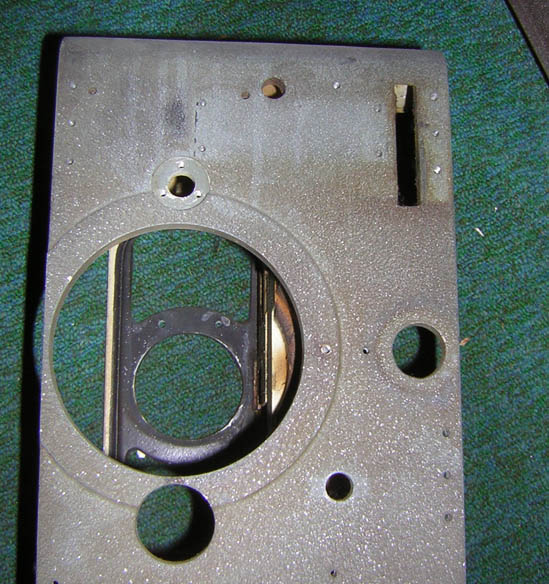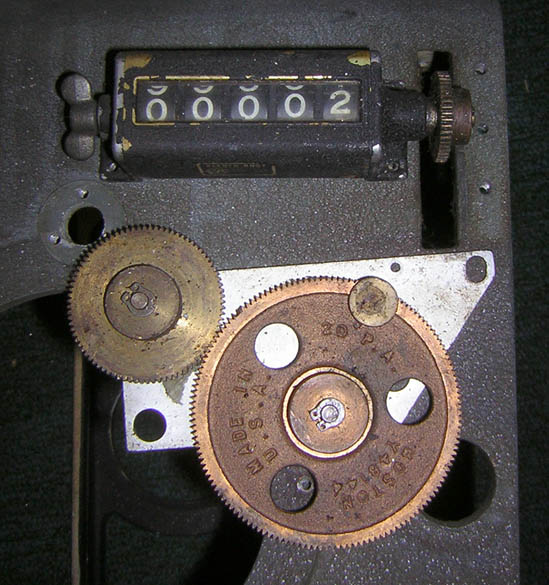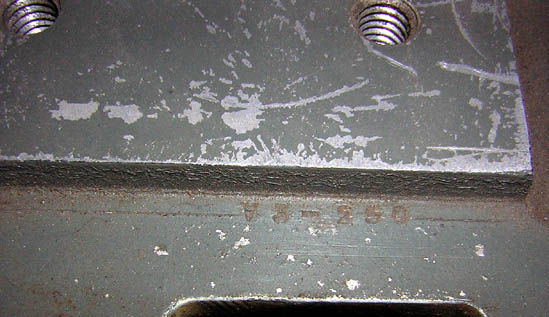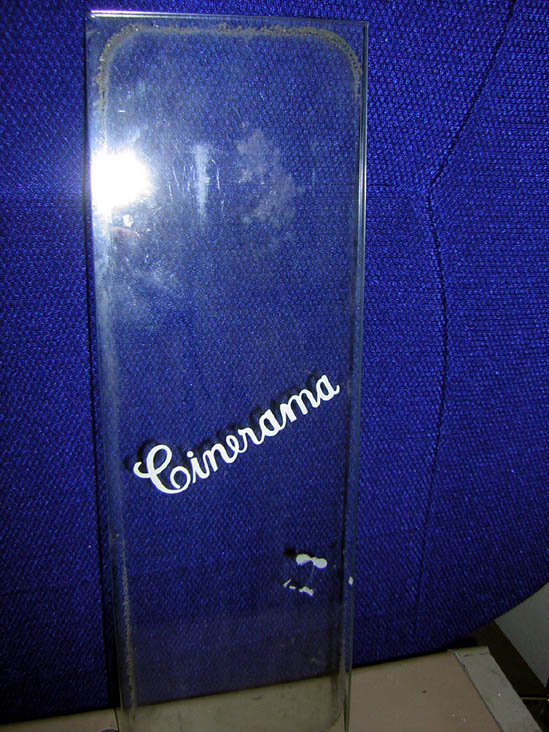|
Author
|
Topic: Help identifying Century model
|
|
|
|
|
|
|
|
|
|
|
|
|
|
|
|
|
|
|
|
|
|
|
|
|
Cary Loeser
Film Handler
Posts: 9
From: Evergreen, Colorado, USA
Registered: Dec 2004
|
 posted 04-02-2007 09:37 PM
posted 04-02-2007 09:37 PM




Brian,
I think Louis is correct. Cinerama intermittent movements were different from H and SA movements in the following ways:
1. Cinerama used 24-tooth sprockets (approximately 1-1/2" diameter) in lieu of the conventional 16-tooth sprockets (approximately 1" diameter). That's why Cinerama intermittent movements that are have been converted to 16-tooth sprockets will have a little more than 1/4" clearance between the sprocket teeth and the rear bracket; to make room for the extra 1/4" sprocket radius.
2. The original Cinerama intermittent movements had a steel disc that was mounted on the starwheel shaft next to the sprocket. The disc was 1-1/2" OD and approximately .030" thick and looked like a fender washer. Also mounted on the starwheel shaft was a four-legged tension spring made out of .007" thick bronze. This spring was next to the disc and held the disc in contact with the sprocket. I'm not sure what the purpose of this disc and spring were, since the sprocket could not move on the shaft after it was installed. If the intermittent movement has been converted over to a 16-tooth sprocket, then the disc and spring are probably no longer there.
3. Since the diameter of the Cinerama sprocket was larger, the intermittent shoe assembly (sometimes refeered to as the intermittent pad and arm assembly) was longer and designed to run against a larger diameter sprocket. If the intermittent movement has been converted over to a 16-tooth sprocket, then the Cinerama intermittent shoe assembly had to be removed from the intermittent movement and replaced with a conventional shoe assembly. So if you have an 16-tooth intermittent movement with shoes that don't exactly seem to fit the sprocket diameter, it could be a Cinerama intermittent that was converted over to a 16-tooth sprocket and no one bothered to replace the shoe assembly.
There may have been "internal" differences between the Cinerama intermittent movements and the H or SA movements but I do not know what they would be.
If an intermittent movement has a 16-tooth sprocket, there is at least 1/4' clearance between the sprocket teeth and the rear bracket, and the serial number of the intermittent movement starts with a V3, then it is most likely an old Cinerama movement.
| IP: Logged
|
|
|
|
|
|

 Home
Home
 Products
Products
 Store
Store
 Forum
Forum
 Warehouse
Warehouse
 Contact Us
Contact Us




 Printer-friendly view of this topic
Printer-friendly view of this topic















